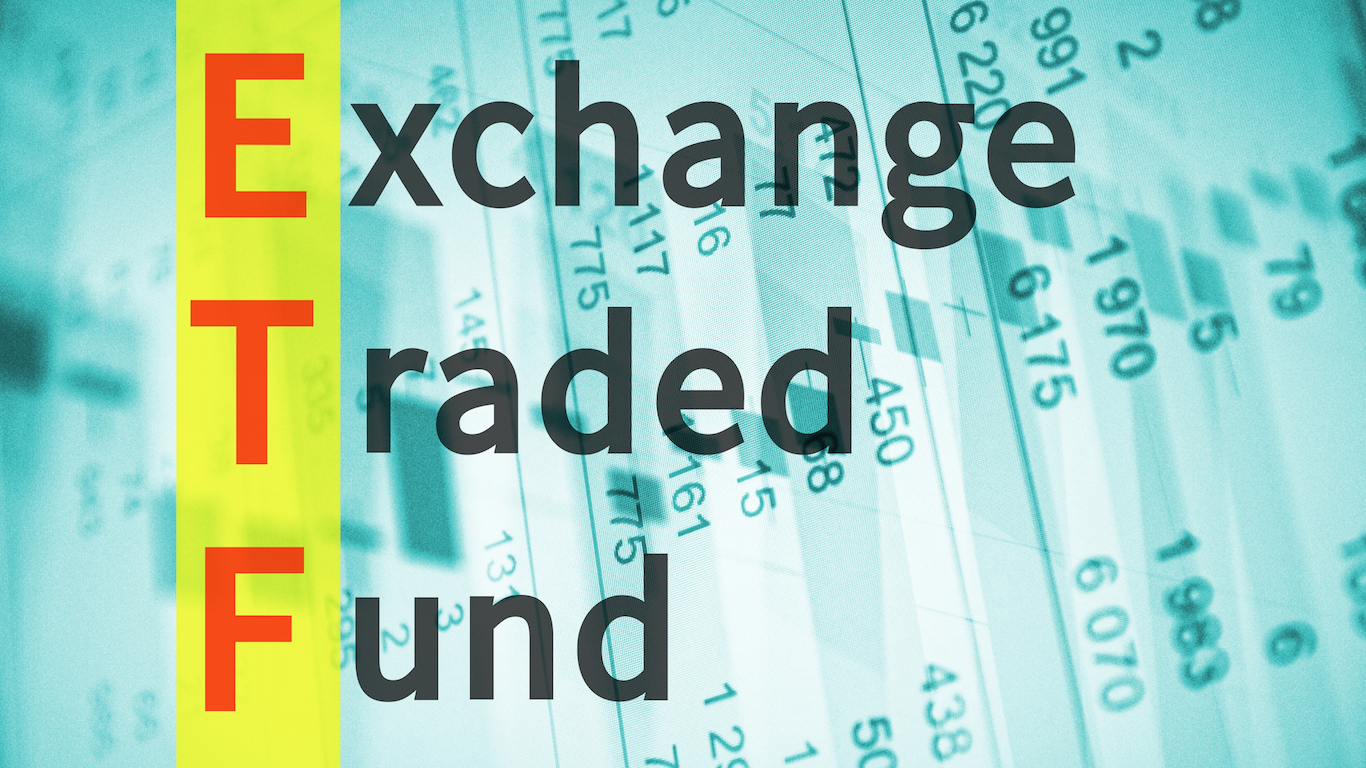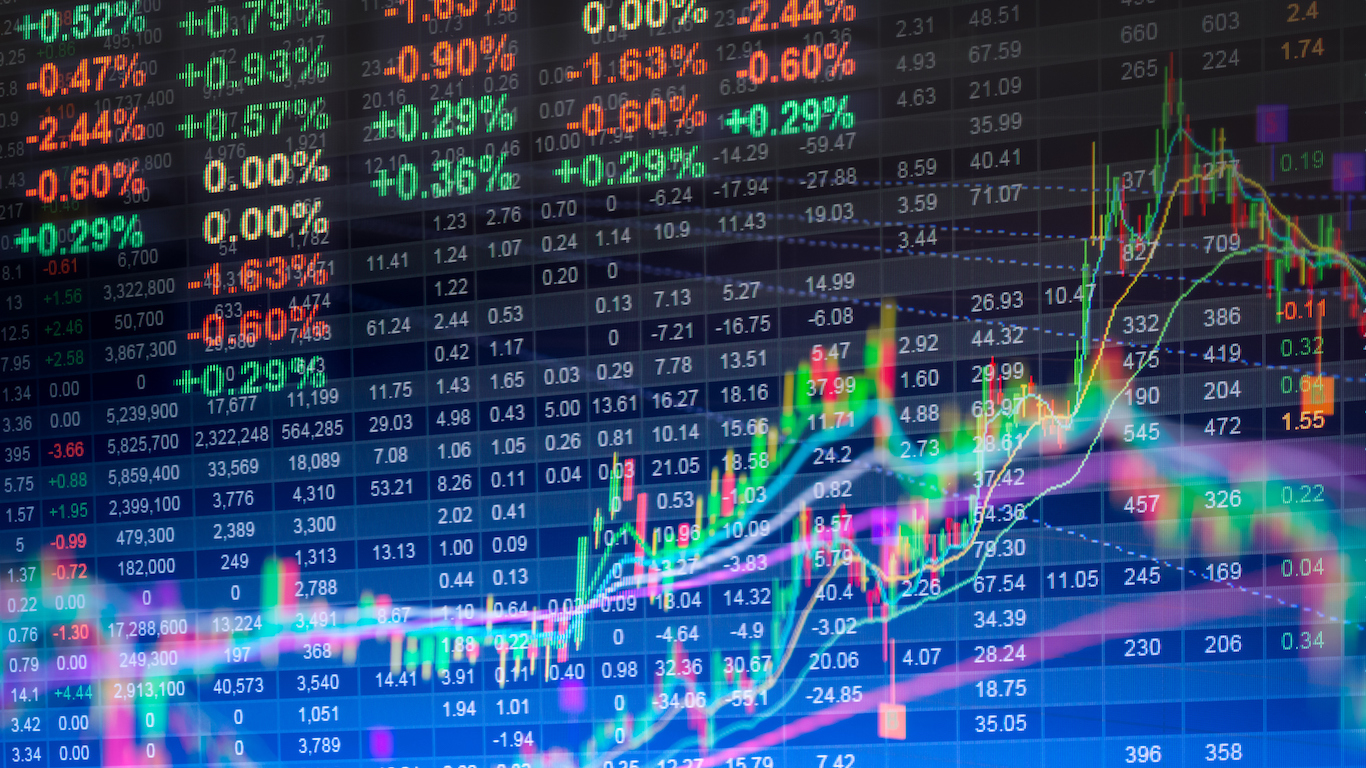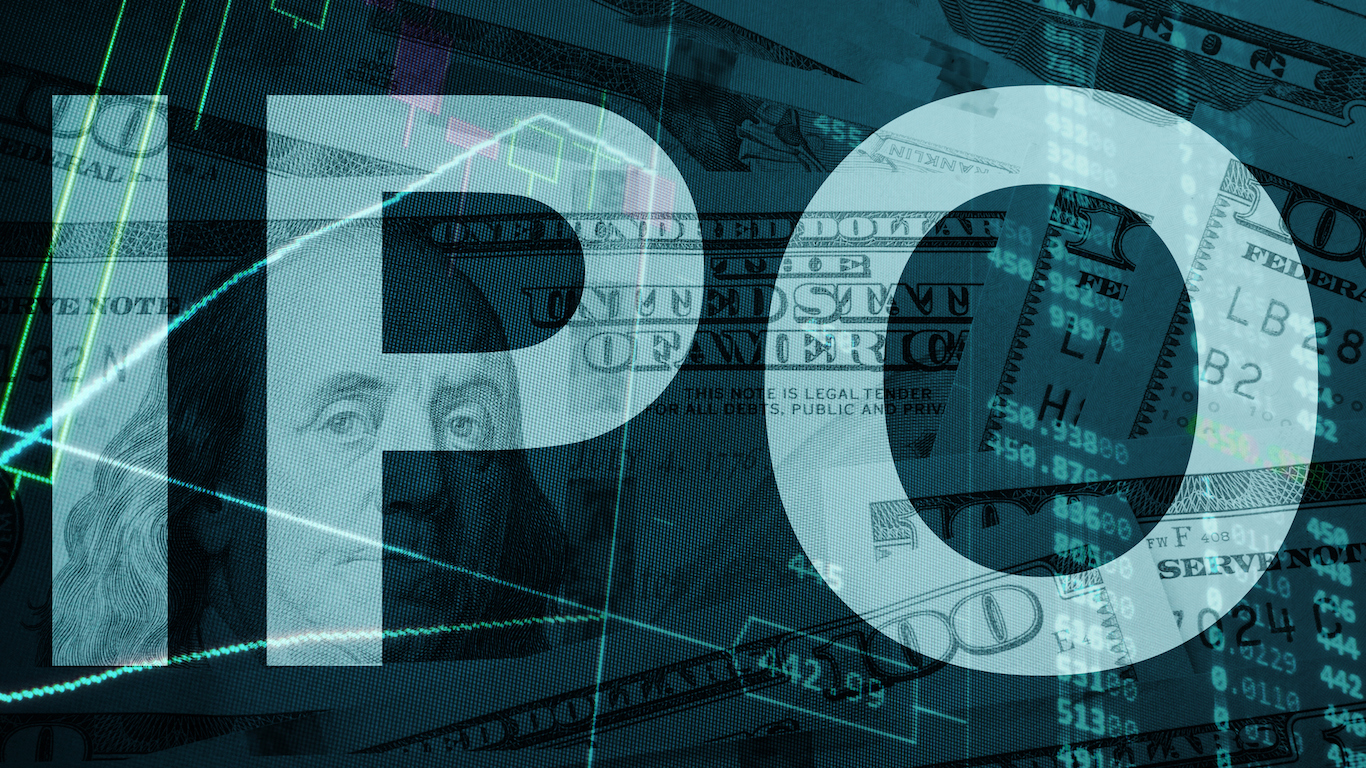Special Report
The Best (and Worst) Investments of 2016

Published:
Last Updated:

Year-end reviews allow investors to examine which investments did well and which were better left out of the portfolio. They also provide a summary of trends, and perhaps hint at future ones.
With an increasingly interdependent global economy, Americans’ investing portfolios are also increasingly tied to global developments. This year, the stock market continued to recover. The U.S. dollar also continued to strengthen, hitting a 13-year high last month. In commodities, energy and metals did well, while many agricultural commodities had a poor year.
[in-text-ad]
Based on 2016 performance of individual investments in seven major investment classes — mutual funds, ETFs, large-cap stocks, IPOs, commodities, currencies, and fixed income mutual funds — 24/7 Wall St. reviewed the best and worst investments in 2016.
Click here to see the best investments of 2016.
Click here to see the worst investments of 2016.
Betting on commodities was on the whole a good decision in 2016, with the S&P GSCI — a widely tracked commodities index — up 12% on the year. As was the case last year, The U.S. dollar was up against most of the most commonly traded global currencies. The election of Donald Trump has led to speculation that the Federal Reserve could raise interest rates several times in the coming year.
In each of the seven asset classes, regardless of the overall market performance, some investments proved highly profitable, while others were disastrous for investors. While the S&P 500 index was up by about 11% at the time of this writing, the price of some stocks shot up while the price of others plummeted. The best performing large-cap stock so far in 2016 has been chipmaker NVidia — NVDA shares rose by 230%. Shares of pharmaceutical company Endo International, on the other hand, fell by nearly 75%.
The drop in oil and natural gas prices was also the reason the Venezuelan bolivar was the worst performing currency in 2015 relative to the U.S. dollar. The Venezuelan economy relies heavily on its substantial oil reserves, and the plummeting value of oil has devastated the country’s economy.
In order to identify the best investments of 2016, 24/7 Wall St. reviewed data from a number of sources. Rankings on mutual funds and ETF returns are from Morningstar. To determine fixed income mutual fund returns, we screened for bond funds exclusively. For large-cap stocks we used those comprising the S&P 500 index. Returns on IPOs assume investors bought shares at the IPO price. Currency data are from Google Finance and year to date price changes on commodities came from Bloomberg. Currencies were compared to the U.S. dollar and commodities were excluded if they were tied to a foreign currency. Year-to-date returns are all as of December 23, 2016.
These are the best (and worst) investments of 2015.

1. Mutual Funds
No equity mutual fund did better over the past year than US Global Investors World Precious Minerals Fund (UNWPX). The fund returned about 60% year to date, more than any other mutual fund and outperforming the S&P 500 by roughly 50 percentage points. The fund invests at least 80% of its net assets in stocks of companies engaged in the exploration, mining, and processing of precious minerals such as gold, silver, platinum metals, palladium, and diamonds. The benchmark for the industry, the NYSE Arca Gold Miners, also did exceedingly well, increasing by 39.3% since December 2015.
Gold is not only used in jewelry and certain medical and electronic devices, but also many of the world’s wealthiest nations have large gold reserves. Due to its enduring value, gold is often regarded as a safe investment, particularly in times of economic uncertainty. Political uncertainty in the United States this year, as well as instability in Europe and violence in the Middle East, may have driven up the price of gold in 2016, which in turn drove up the prices of gold mining stocks and the fund’s value.
[in-text-ad]

2. ETFs
Exchange-traded funds (ETFs) allow investors to bet on the performance of an index or a commodity in the form of a security. In addition, some are leveraged or inverse ETFs, which use derivatives, such as selling short the underlying asset, and debt to magnify the return — or the inverse return — of the underlying asset. The best performing ETF was Direxion Daily Semiconductor Bull 3X ETF, a fund designed to track and seek triple the daily return of the semiconductor industry. The ETF began the year around $25 a unit and is now traded at over $60 a unit — a 140% return.
Leveraged ETFs are inherently riskier and therefore have the possibility to provide greater returns. The year’s best performing non-leveraged ETF was PureFunds ISE Junior Silver ETF, which tracks the price movement of silver. This ETF’s share price shot 122% higher this year.

3. Large Cap Stocks
The S&P 500 index is currently up about 10.5% on the year, and will likely remain around there until 2017. Five hundred of the most valuable publicly traded companies comprise the index, which is an important benchmark for the stock market and the broader economy as a whole. Because the companies in the S&P 500 are so large, their share prices tend to be relatively stable. This year, Silicon Valley semiconductor maker Nvidia was an exception.
Nvidia manufactures chips for the gaming, professional visualization, data, mobile and automotive markets. It is the only S&P 500 company to more than triple its share value in 2016. A single Nvidia share sold for just over $32 when the market opened on January 4, 2016. By the time of this writing, the company’s share price was over $100, a roughly 230% surge. Nvidia’s share price has been climbing steadily all year with no substantial dips. The company beat earnings estimates in each quarter this year, and its share price jumped considerably after it reported record revenue and profit margins in its third quarter.

4. IPOs
About 100 companies debuted on a major U.S. exchange in 2016, a relatively tame pace compared to recent years. Some investors look to initial public offerings hoping to get in on the ground floor of the next big thing. This year, IPO investors could not have done any better than with Acacia Communications, Inc. Shares of the cloud-based communications company debuted at around $31 in May, but extremely favorable earnings reports spurred investor confidence and drove up the company’s share price. In its second fiscal quarter, Acacia reported revenue of $116 million, well above Wall Street’s expectations of $86 million. On the strength of its financial success, Acacia shares surged by more than 110% to roughly $66.

5. Commodities
Of the major commodities futures across the agriculture, energy, and metals sectors, zinc was the best performing in 2016. Primarily used in metal alloys and as a coating for other metals, zinc is also used in the production of rubber and certain medicines. Year to date, zinc futures have climbed by nearly 70%. Some analysts project demand for zinc and zinc production will continue to climb next year.
Unlike 2015, this year was an especially good one for the commodities markets. Other commodities that performed especially well were in the energy sector. Natural gas, heating oil, and Brent crude futures also increased substantially in 2016. Only a handful of commodities, primarily in the agriculture sector, lost value this year.
[in-text-ad]

6. Currencies
Political turmoil and economic crisis in recent years have led to significant depreciation of the Brazilian real. The South American currency has lost 44% of its value compared to the U.S. dollar over the last half decade. While many of the nation’s problems persist, this year marked a departure from the longer-term trend of depreciation. Year to date, Brazil’s currency has appreciated in value by about 20% vis-a-vis the dollar, more than any other major currency in the world.
Brazil’s was one of many currencies in South America to appreciate the most in 2016. Chile’s and Colombia’s currencies appreciated by 4.9% and 6.1%, respectively. Outside of the Americas, the Russian ruble and the South African rand had the biggest gains, appreciating by 19.7% and 10.2%, respectively, relative to the U.S. dollar.

7. Fixed Income Mutual Funds
Fixed income mutual funds invest in fixed income securities such as U.S. Treasuries, government bonds, and corporate bonds, among others. For conservative investors, fixed income funds are an opportunity to obtain regular income with relatively manageable risk.Throughout 2016, investors flocked to high risk, high-yield bonds, and generally earned high returns. High-yield corporate bonds outperformed the S&P 500 index year to date, particularly in the third quarter. Overall, 2016 was the the third best year for the asset class in the past two decades.
The best performing fixed income mutual fund focused on such bonds. Class I of the Catalyst/SMH High Income Fund (HIIIX) is up 38.5% year to date, more than any other fixed income fund. The fund invests in a non-diversified group of low quality, high-yield corporate bonds, convertible securities, and asset-backed securities. Class I of the Catalyst/SMH High Income Fund’s return was nearly three times the return of the S&P 500.

1. Mutual Funds
No equity mutual fund performed worse than the Service Class of the ProFunds UltraShort Latin America (UFPSX) fund over the past year. The fund is down roughly 60% so far in 2016, more than nearly any other investment in the asset class. The mutual fund invests 80% of its assets in financial instruments that seek to return twice the inverse performance of the Bank of New York Latin America 35 ADR Index. The index tracks the returns of Latin American companies, a majority of which are located in Brazil and Mexico. Therefore, an investment in the fund is a bet against the success of Latin American business.
[in-text-ad]
The ProFunds UltraShort Latin America mutual fund began the year at its highest point in more than half a decade. Its value has steadily declined since, making it one of the worst investments of 2016.

2. ETFs
Exchange-traded funds, or ETFs, track indices or commodities, as opposed to individual stocks, which are shares in a specific company. Some ETFs, such as leveraged ETFs, also provide investors with two, or even three times the return of the underlying assets. Some ETFs provide the inverse return, allowing investors to make money when the underlying index or commodity falls. While investing in a leveraged position can yield significantly higher returns, it is also inherently riskier and can lead to massive losses. The worst leveraged ETF this year was the Direxion Daily Junior Gold Miners Index Bull and Bear 3x ETF, a fund that inversely tracks gold mining companies around the world. The ETF’s value fell 96.3%, making it one of the worst investments of the year.
The ETFs poor performance in 2016 is due to gold’s relative popularity. Amid political and economic uncertainty in the U.S. and E.U., gold significantly appreciated in value over the past year.

3. Large Cap Stocks
Large cap stocks are often considered relatively safe bets. Because, by definition, such stocks are associated with high-value companies, large annual share price fluctuations are rare. This year, Endo International was an exception. Between January 4 and December 23, 2016, the company’s share price lost nearly three-quarters of its value.
A health care company, Endo International develops, manufactures, markets, and distributes pharmaceuticals and generic drugs as well as medical devices. The company’s poor performance on Wall Street is likely tied to recent legal troubles. Endo’s share price dropped after the Federal Trade Commission filed a complaint in March alleging that the drugmaker used pay-for-delay settlements to fix generic drug prices for some of its best selling products. More recently, Endo International was the subject of a class action lawsuit, alleging one of it subsidiaries colluded with other drugmakers in a price fixing scheme. Endo stock, which sold for nearly $60 a share at the beginning of the year, is now selling for less than $16.

4. IPOs
There were a number of initial public offerings in 2016 that completely failed to meet expectations, but likely none was as disappointing as PhaseRx, a biopharmaceutical company that focuses on treatment of liver diseases. Debuting in mid-May at just over $5 a share, shares of the biopharma company plummeted to less than $1 by mid-November. Later that month, however, PZRX shares spiked on news that the FDA had approved orphan status for one of the company’s drugs. Shares have recovered to about $1.50 on the news. For investors who got in on the IPO price of $5 a share, however, the recovery does not make up for the 70% loss on their investment.

5. Commodities
Cocoa was the best performing commodity in 2015, appreciating by more than 18%. This year, however, cocoa has been the worst performing commodity, losing nearly 30% of its value. Cocoa futures traded at the lowest price in three years after analysts anticipated both reduced demand and a possible supply surplus. On the demand side, Cocoa futures dipped in October after reduced cocoa processing in Europe, the largest importer of cocoa beans in world. On the supply side, Cocoa futures declined after analysts anticipated high crop yields in West Africa, the largest exporter of cocoa beans.
[in-text-ad]
Cocoa’s poor performance was in keeping with the broader trend across the agriculture sector. Many of the poorest performing commodities were agricultural, while the best performing tended to be in energy and metals.

6. Currencies
No currency has depreciated more, relative to the U.S. dollar, than the Venezuelan bolivar year to date. The bolivar was also the worst performing currency in 2015, when inflation in Venezuela climbed by nearly 200% and the cost of food spiked by more than 300%.
This year, the bolivar has been in a near free fall. In an attempt to combat opportunistic foreigners from hoarding the country’s effectively worthless currency, President Nicolas Maduro, announced earlier this month that the 100 bolivar notes would be pulled from circulation. The highest denomination bill is worth only about 3 cents in USD. Massive inflation in the country was spurred by the glut of oil in the world economy. Oil is far and away the biggest magnet for foreign dollars in the country, and the global downturn in oil prices in recent years led to the country’s income falling by more than 62%.

7. Fixed Income Mutual Funds
Fixed income funds are mutual funds that invest in fixed income securities such as U.S. Treasuries, corporate bonds, and municipal bonds among others. For conservative investors, fixed income funds are an opportunity to obtain regular income with relatively manageable risk. Throughout 2016, investors flocked to high risk, high yield bonds, which outperformed the S&P 500 index this year.
One of the worst performing funds of the year had the opposite strategy. Class A of the Rydex Inverse High Yield Strategy Fund is down 13.8% year to date, among the worst of any fixed income fund. The mutual fund invests in financial instruments that seek to provide inverse the return of the high yield bond market. With high yield bonds having just had their best year since 2009, it is no surprise that a fund betting against the asset class was one of the worst investments of the year.
If you’re one of the over 4 Million Americans set to retire this year, you may want to pay attention. Many people have worked their whole lives preparing to retire without ever knowing the answer to the most important question: am I ahead, or behind on my goals?
Don’t make the same mistake. It’s an easy question to answer. A quick conversation with a financial advisor can help you unpack your savings, spending, and goals for your money. With Zoe Financial’s free matching tool, you can connect with trusted financial advisors in minutes.
Why wait? Click here to get started today!
Thank you for reading! Have some feedback for us?
Contact the 24/7 Wall St. editorial team.